About Kids Inventors Day
Activites To Implement
Encourage children to come up with their own inventions. Provide them with a variety of materials like cardboard, tape, glue, and recycled items. Guide them through the process of identifying a problem, brainstorming solutions, and creating a working model.
2. Research Famous Inventors
Assign each child an inventor to research. They can learn about the inventor's life, the challenges they faced, and the impact of their inventions. Children can then present their findings to the class, complete with visuals or homemade replicas of the inventions.
3. Invention Showcase or Fair
Organize an event where children can display and demonstrate their inventions. This can be an in-class activity or a larger fair where parents and community members are invited to view and engage with the young inventors.
4. Marshmallow Catapults
Build a simple catapult using popsicle sticks, rubber bands, and a spoon. Children can use the catapult to launch marshmallows into the air, learning about basic engineering and physics in the process.
5. Balloon-Powered Cars
Create balloon-powered cars using plastic bottles, balloons, and straws. This activity helps children understand the principles of force and motion.
6. Spaghetti Tower Challenge
Challenge children to build the tallest tower using only spaghetti and marshmallows. This activity teaches them about structural engineering and teamwork.
7. Recycled Box Challenge
Provide children with cardboard boxes and let their imaginations run wild. They can create anything from robots to houses, learning about recycling and creativity at the same time.
8. Human Body Assembly
Have children assemble a 2D paper model of the human body, identifying different parts as they go. This activity combines learning about anatomy with a fun, hands-on project.
9. Inventor Story Time
Read stories about famous inventors and their inventions. Discuss the challenges they faced and how they overcame them. This can inspire children to think creatively and persevere through difficulties.
10. Invention Certificates
Celebrate the children's achievements by giving them certificates for their inventions. This can be a great way to recognize their hard work and creativity.
Famous Inventors
Historical Inventors
-
Thomas Edison:
-
Inventions: Light bulb, phonograph, motion picture camera
-
Impact: Pioneered the development of electric power and numerous devices that greatly influenced modern life.
-
-
Nikola Tesla:
-
Inventions: Alternating current (AC) electricity system, Tesla coil
-
Impact: Made groundbreaking advancements in electrical engineering, contributing to the development of modern power systems.
-
-
Alexander Graham Bell:
-
Inventions: Telephone
-
Impact: Revolutionized communication with the invention of the telephone, making it possible for people to speak over long distances.
-
-
Marie Curie:
-
Inventions: Research on radioactivity, discovery of radium and polonium
-
Impact: Made significant contributions to science and medicine, winning two Nobel Prizes in different scientific fields.
-
-
Leonardo da Vinci:
-
Inventions: Concept designs for helicopters, tanks, and various mechanical devices
-
Impact: A Renaissance polymath whose innovative ideas and designs were far ahead of his time.
-
Modern Inventors
-
Steve Jobs:
-
Inventions: Co-founder of Apple Inc., development of the iPhone, iPad, and Mac computers
-
Impact: Transformed the technology industry with innovative consumer electronics and user-friendly design.
-
-
Tim Berners-Lee:
-
Inventions: World Wide Web
-
Impact: Created the foundation for the modern internet, revolutionizing the way people access and share information.
-
-
Elon Musk:
-
Inventions: Founder of SpaceX, Tesla Motors, and SolarCity; innovations in electric vehicles, space travel, and renewable energy
-
Impact: Pushing the boundaries of technology and sustainability with groundbreaking advancements in various fields.
-
Kid Inventors
-
Benjamin Franklin:
-
Inventions: Swim flippers (invented at age 12)
-
Impact: Contributed to various fields, including electricity and civic organizations.
-
-
Philo Farnsworth:
-
Inventions: Early television technology (invented at age 14)
-
Impact: Played a crucial role in the development of television, changing the way people receive information and entertainment.
-
-
Chester Greenwood:
-
Inventions: Earmuffs (invented at age 15)
-
Impact: Created a practical solution to keep ears warm in cold weather, leading to widespread use of earmuffs.
-
-
Frank Epperson:
-
Inventions: Popsicle (invented at age 11)
-
Impact: Accidentally created a beloved frozen treat that is enjoyed by people worldwide.
-
Easy Inventions For Preschoolers
1. Homemade Binoculars
Materials: Two toilet paper rolls, tape, string, markers, stickers Instructions:
-
Tape the two toilet paper rolls together side by side.
-
Decorate the rolls with markers and stickers.
-
Attach a piece of string to each side to create a neck strap. Activity: Use the binoculars for outdoor adventures and exploration.
2. Mini Parachutes
Materials: Plastic bags, string, small toys (like action figures), scissors Instructions:
-
Cut the plastic bag into a square.
-
Attach a piece of string to each corner of the square.
-
Tie the other ends of the strings to a small toy. Activity: Drop the parachutes from a height and watch them float down.
3. Straw Rockets
Materials: Paper, tape, straw, scissors Instructions:
-
Cut a small rectangle of paper and wrap it around the straw to form a tube. Tape the tube.
-
Fold one end of the tube and tape it to create the rocket's nose.
-
Decorate the rocket with markers. Activity: Blow through the straw to launch the rocket.
4. Balloon-Powered Cars
Materials: Plastic bottle, bottle caps, straws, balloon, tape Instructions:
-
Attach the bottle caps to the bottom of the plastic bottle using straws as axles.
-
Tape a balloon to the top of the bottle, ensuring the opening is at the back. Activity: Blow up the balloon and release it to watch the car move.
5. Sensory Bottles
Materials: Clear plastic bottle, water, glitter, small toys or beads, glue Instructions:
-
Fill the plastic bottle with water, leaving some space at the top.
-
Add glitter and small toys or beads.
-
Glue the bottle cap on securely. Activity: Shake the bottle and watch the glitter and items swirl around.
6. Foam Cup Phones
Materials: Two foam cups, string, scissors Instructions:
-
Poke a small hole in the bottom of each foam cup.
-
Thread a piece of string through the holes and tie knots to secure it. Activity: Use the cups as a "phone" to talk to each other from a distance.
7. Paper Plate Windmills
Materials: Paper plate, pencil, straw, scissors, tape Instructions:
-
Cut the paper plate into sections, leaving the center intact.
-
Attach the sections to a straw using tape.
-
Push a pencil through the center to create a handle. Activity: Blow on the windmill to make it spin.
8. Marble Run
Materials: Cardboard tubes, tape, marbles Instructions:
-
Cut the cardboard tubes in half lengthwise.
-
Tape the tubes to a wall or board to create a track. Activity: Roll marbles through the track and watch them go.
Children's Books On Famous Inventors
Here are some wonderful children's books about famous inventors that can inspire young minds:
-
"Rosie Revere, Engineer" by Andrea Beaty: This book tells the story of Rosie, a girl who loves to invent and create. When her great-great-aunt asks for a flying machine, Rosie's invention doesn't work as planned, but she learns the importance of perseverance.
-
"The Girl Who Thought in Pictures: The Story of Dr. Temple Grandin" by Julia Finley Mosca: This book introduces children to Dr. Temple Grandin, a scientist with autism who used her unique ability to connect with animals to revolutionize the farming industry.
-
"Whoosh!: Lonnie Johnson's Super-Soaking Stream of Inventions" by Chris Barton: This book tells the story of how Lonnie Johnson accidentally invented the Super Soaker while working on a new heat pump. It highlights the importance of creativity and problem-solving.
-
"The Junkyard Wonders" by Patricia Polacco: This book is based on Patricia Polacco's own childhood experience. It tells the story of a group of students who are placed in a "special" classroom and how they use junkyard scraps to create amazing inventions.
-
"If I Built a Car" by Chris Van Dusen: This imaginative book follows Jack as he envisions designing his own car with all sorts of fantastic features. It encourages children to think creatively and dream big.
-
"How Ben Franklin Stole the Lightning" by Rosalyn Schanzer: This book provides a glimpse into the life of Benjamin Franklin and his famous experiments with electricity. It's a fun and educational read about one of America's most famous inventors.
-
"Hedy Lamarr's Double Life" by Laurie Wallmark: This book tells the story of actress Hedy Lamarr, who was also a brilliant inventor. During World War II, she developed a groundbreaking communications system that is still essential to today's technology.
-
"Six Dots: A Story of Young Louis Braille" by Jen Bryant: This book tells the story of Louis Braille, who invented the Braille system for reading and writing for the blind. It's an inspiring tale of determination and innovation.



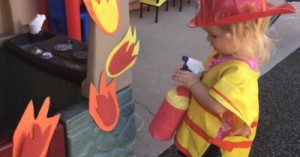

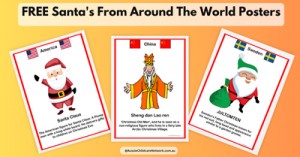

 Open ended questions cannot be responded to with one word answers such as yes or no. These types of questions enables a child to provide
Open ended questions cannot be responded to with one word answers such as yes or no. These types of questions enables a child to provide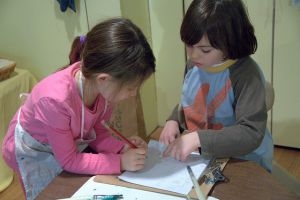 During your child’s preschool years, an important milestone begins to emerge. This is the development of pre-writing skills. Pre-writing skills are used to encourage, develop
During your child’s preschool years, an important milestone begins to emerge. This is the development of pre-writing skills. Pre-writing skills are used to encourage, develop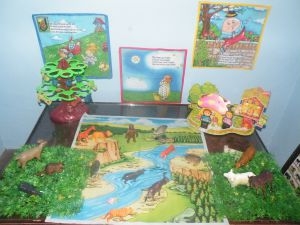 Open ended materials enables children to play freely. They are objects that have no rules to follow, use or function. Raw materials that can be
Open ended materials enables children to play freely. They are objects that have no rules to follow, use or function. Raw materials that can be An Acknowledgment of the Country is a way of showing respect for the Traditional Owners and can be given by both non-Indigenous people and Aboriginal
An Acknowledgment of the Country is a way of showing respect for the Traditional Owners and can be given by both non-Indigenous people and Aboriginal Language plays an important role in a child’s development. It enables a child to communicate effectively with their family, learn at school, socialize with friends,
Language plays an important role in a child’s development. It enables a child to communicate effectively with their family, learn at school, socialize with friends,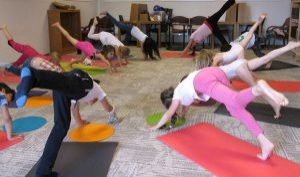 Like adults, children have to deal with their own stress in life. Moving house, starting a new school, preparing for a new sibling - these are
Like adults, children have to deal with their own stress in life. Moving house, starting a new school, preparing for a new sibling - these are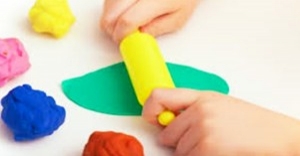 Playdough is such a versatile material. It provides numerous benefits to children as they manipulate it, it is safe and soothing and provides children with
Playdough is such a versatile material. It provides numerous benefits to children as they manipulate it, it is safe and soothing and provides children with Teaching children about sustainability enables them to appreciate and respect the natural environment. Early childhood services can provide meaningful hand on learning experiences in order
Teaching children about sustainability enables them to appreciate and respect the natural environment. Early childhood services can provide meaningful hand on learning experiences in order Recycling is an important concept that teaches children to care for the environment. It encourages children to be responsible and show a growing appreciating for
Recycling is an important concept that teaches children to care for the environment. It encourages children to be responsible and show a growing appreciating for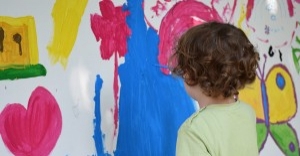 When children apply paint to paper, glue things together, or pound a lump of clay, they experiment with colour, shape design and texture.
When children apply paint to paper, glue things together, or pound a lump of clay, they experiment with colour, shape design and texture.



